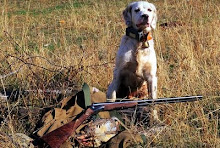 Recently returned from Southern Arizona where I was fortunate to visit the Altar Valley , a rich grassland located SW of Tucson. Originally established as a ranch by Pedro Aguirre in 1864, the 118,000 acre Buenos Aires was purchased by the US Fish and Wildlife Service in 1985. The purchase was made to preserve and restore the largest ungrazed grassland in Arizona and to protect habitat for wildlife - especially for the masked bobwhite quail.
Recently returned from Southern Arizona where I was fortunate to visit the Altar Valley , a rich grassland located SW of Tucson. Originally established as a ranch by Pedro Aguirre in 1864, the 118,000 acre Buenos Aires was purchased by the US Fish and Wildlife Service in 1985. The purchase was made to preserve and restore the largest ungrazed grassland in Arizona and to protect habitat for wildlife - especially for the masked bobwhite quail.The masked bobwhite (Colinus virginianus ridgwayi) had vanished from its small range in Southern Arizona by around 1900, due to habitat changes brought on by cattle grazing. The masked bobwhite was thought to be extinct by the 1930's. Then, in 1964, Steve Gallizioli, an Arizona Game and Fish biologist, and naturalists Jim and Seymour Levy of Tucson, rediscovered a small population in Sonora, Mexico and a program to re-introduce the bird was initiated. Introductions of pen raised birds on grazed cattle ranches failed. Then the Endangered Species Act made possible the acquisition of the Buenos Aires property in the mid-80's, cattle were removed from the grasslands, and funding was made available to begin a larger restoration program.
Still, after the rearing and release of more than 25,000 masked bobwhite quail, success has eluded the FWS. Mortality rates after release are over 90% - not surprising, since quail mortality year to year is high due to predation. While the FWS says in official documents that perhaps 100 to 200 wild birds live in the Buenos Aires grassland, Bonnie Swarbrick of the FWS at Buenos Aires told me there may be as few as 50 wild birds established at the refuge.
Sometimes what is undone cannot later be remedied, despite the best of intentions.









2 comments:
Very interesting Mike. Are there other native species doing well?
Dale
I think the raptors are doing pretty well ;-)
Pronghorns are getting re-established, as well.
I do not know what king of Gambel's population they have, but there is no bird hunting on this NWR - for obvious reason.
Post a Comment